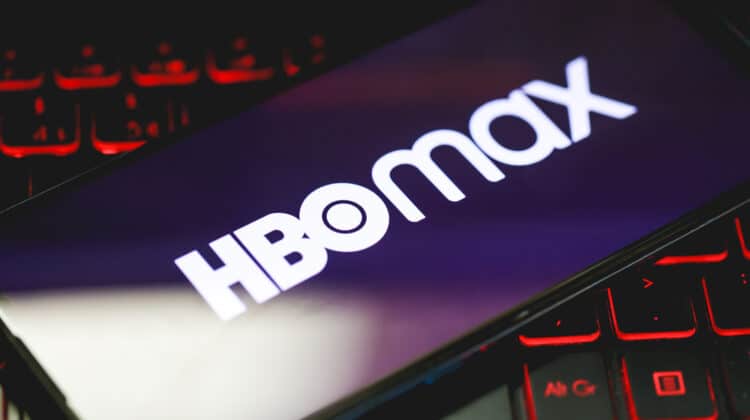
Ethernet is a great way to get a fast and secure internet connection.
However, the Ethernet connection can also run into different issues like any PC function or component.
For example, you may realize that your WiFi is connected, but the Ethernet connection isn’t working, although both connect to the same router.
Fortunately, this issue isn’t very serious, and you can try different solutions to fix it.
WiFi Works But Not Ethernet (Causes, Fixes)
1. WiFi Is On

Your router can have both WiFi and Ethernet connections activated simultaneously.
This configuration is okay because the router has dedicated ports to connect it to other devices.
When you choose to use a wired connection instead of a wireless one, you may forget to turn the WiFi off.
While it shouldn’t cause any issues in your system, the computer may prefer a WiFi connection over Ethernet.
The reason is WiFi has priority over Ethernet, and the computer connects to the modem or router wirelessly.
How To Fix
The easiest solution is to turn off the WiFi on your computer.
Your computer has only one choice to connect to the internet, the Ethernet.
However, before turning off WiFi, you want to ensure the Ethernet connection is on.
It can sound too simplistic, but it can be a simple memory slip.
Here’s how to enable an Ethernet network adapter:
Open the Settings app and click on Network & Internet.
Go to the Status page and click on Change adapter options.
Right-click the Ethernet and select Enable.
If the Ethernet is already on, take the following steps to turn off the WiFi connection on your computer:
Click on the WiFi icon in the lower right corner of your taskbar.
Doing so will open a list of all the available networks and your WiFi on top.
Under the list, you can find different options, including WiFi, Airplane Mode, and Mobile Hotspot.
Click on WiFi to turn it off.
Alternatively, you could disable WiFi the same way you enable Ethernet, as described above.
Give Ethernet Priority
While this solution is straightforward and quickly fixes your problem, you may not want to use it for different reasons.
For example, you may need to constantly switch between WiFi and Ethernet and don’t want to turn WiFi on and off repeatedly.
You could try another solution in such cases: giving Ethernet the priority as the first mode of connection.
Type Settings in the taskbar’s search box and click on the first result.
Go to Network & Internet and select Status from the left pane.
Click on Change Adapter Options under Advanced Network Settings and select Ethernet.
Right-click on it and select Properties.
Locate Internet Protocol Version 4 (TCP/IPv4) in the list of items and click on it.
Click Properties.
Under the General tab, select Advanced.
The last item in the new window is the Interface metric with a number inside the box.
Clear that number and replace it with 1 or any priority value you prefer.
Click Ok and close the box.
2. Damaged Cables

One of the most frequent causes of weak or no connection is damaged cables and ports.
The cables don’t need to be completely cut off to cause connection issues.
Even a frayed wire can lead to an interrupted connection.
You should make sure nothing is hindering a proper connection.
How To Fix
Fixing this issue is pretty easy.
All you need to do is check all cables and ports that can cause connection issues if damaged or loose.
You may want to remove the cables from the ports and reconnect them to make sure they’re inserted firmly.
Carefully check the cables by running your finger along their length, feeling for any small cut or bend.
If the cables are bent at the corners or are stuck under furniture, the delicate internal wires can easily get damaged.
You should also make sure all the ports are dust-free because dust buildup can prevent the ports from getting inserted all the way through and making complete contact.
If it’s the first time you’re using an ethernet cable, you should make sure you’re using the right cable types.
Then, make sure the ports are working properly by trying different cables and ports and mixing and matching them.
Your router has several Ethernet ports, so you can try a different port and see if it works.
Make sure your cable is working by plugging it into another device.
You should also try to keep the cables as short as possible.
Although most cables can be as long as 100 meters (328 feet), it’s better to keep them short to avoid connectivity issues.
3. PC Issues

After making sure the router and its cables are working properly, you should look for connectivity issues inside your PC.
There may be software and hardware issues that can directly or indirectly affect the quality of your wired or wireless connections.
Here are some software and hardware issues that can prevent your ethernet cable from forming a connection.
A. Sleep Mode
If your ethernet disconnects after the computer goes into sleep mode and takes several minutes to reconnect after wakeup, a specific setting might be the root cause.
This setting allows the computer to disconnect the Ethernet connection when not in use.
You can simply disable this feature and see if it helps.
Go to Device Manager and expand the menu under Network adapters.
Right-click on the ethernet cable and select Properties.
Under the Power Management tab, uncheck Allow the computer to turn off this device.
B. Outdated Drivers
If your computer drivers are outdated, the device may develop glitches or corrupt files that prevent the hardware or software from working properly.
If your ethernet connection isn’t working, it may be due to these corrupt files.
Even if your Windows has installed the latest updates, you should check for these updates manually.
Go to System > Update & Security > Windows Updates > Check for new updates.
There’s also another option named View optional updates.
Make sure to check this option, too.
After installing the latest Windows updates, you should ensure your network adapter drivers are also up to date.
Go to Device Manager and expand the menu under Network adapters.
Right-click your Ethernet and select Update driver.
By selecting Search automatically for drivers, Windows will search for new updates and automatically installs them.
If you want to select the second option, Browse my computer for drivers, you should download the latest drivers from the manufacturer’s website and save them on your computer.
An alternative to updating the driver is to uninstall it, reboot the system, and install it again.
You need to follow the same steps described for updating but choose Uninstall device instead of Update driver.
C. Faulty Updates
If you realize that the Ethernet connection issue appeared after a recent update, it may be the main culprit.
These updates could be major Windows updates or a specific driver update.
Updates are supposed to erase bugs and improve functionalities, but ironically, they may affect some other parts of the system.
Most of these glitches are addressed in the subsequent updates, but you can’t wait until then.
You can roll back to the previous updates to reverse the recent updates’ effect on your Ethernet connection.
Windows will allow you to install previous updates if you’re lucky enough.
Otherwise, you’ll need to try other options.
To roll back to a previous driver update, go to Device Manager, find the driver, and right-click on it.
Select Properties and go to the Driver tab.
Here, you can see the Rollback option.
If it’s not grayed out, you can go back to the previous update.
If it is, you can use System Restore and go back to a pre-defined date before that update.
Alternatively, you could install a recent Windows update if you think that’s the culprit.
Go to Settings and click on Updates & Security.
In the new window, select View update history to see the list of recently installed updates.
Click on Uninstall Updates and find the problematic update.
Right-click on it and select Uninstall.
D. Operating System
If the problem is with your PC, you need to ensure it’s with the hardware or the operating system.
Your hardware may be working fine, but certain OS features may interfere with the Ethernet connections working properly.
You can run your system on a different OS and see if the Ethernet connection issue persists.
If so, you can be sure that it’s hardware-related.
To run your system on a different OS, you can use a Live Linux CD or flash drive.
This way, you run the operating system installed on a disc or flash drive instead of the computer’s hard drive.
It’s easy to use, and you can troubleshoot your Windows PC without issues.
All you need to do is turn off your computer, connect the Live Linux USB stick to the port, and boot up your system.
When the system boots up, you can check if the Ethernet connection is working.
If it does, the problem is with your Windows 10, so you can change your Windows version or reinstall it.
E. Virus Infections
A virus or malware infection can cause various issues within your system, and you may not be able to pinpoint the culprit.
In addition to having reliable anti-malware installed on your system to protect you from such threats, it’s advisable to run a virus scan and see if your system is infected.
You could use Windows built-in Defender or any reliable third-party tool.
F. Residual Power
Your motherboard needs a certain amount of power to work properly.
However, even when your computer isn’t connected to a power source, the motherboard has some electricity stored in its capacitors.
Draining this residual power can help with a wide range of issues because different components are attached to the motherboard, and it helps reset them.
Draining the residual power is straightforward:
Power off your computer and disconnect all the cables, connections, and peripherals.
If you’re using a laptop, remove the battery.
Remember to remove the power cable, too.
Press and hold the laptop or PC’s power button and wait for 30 seconds.
This will simply drain all the static charge from the motherboard.
Plug in the computer, attach the laptop’s battery, turn the system on, and see if the Ethernet connection works.
4. Run The Troubleshooter

Windows comes with a built-in troubleshooter that automatically scans for issues if you can’t pinpoint a specific root cause for your hardware or software problems.
To use this feature, type “troubleshooter” in the taskbar’s search box and press Enter.
Click on the first result and select Additional troubleshooters in the new window.
Here, you can see a list of hardware and software categories for which you can run the troubleshooter.
For the Ethernet connection not working, select troubleshoot Internet Connections under Get up and running, and Network adapter under Find and fix other problems.
It may take a while, but it will fix them automatically if Windows finds any issues.
You might want to take other measures depending on the detected issue if it doesn’t.
5. Reset Network Adapters

The minor glitches in your system can cause different issues across various components.
One of the best solutions to eliminate these glitches is resetting the system.
That’s why the first solution to any minor issue can be rebooting the entire PC.
However, you can be more specific and reset the hardware or software directly related to your issue.
In this case, you can reset network adapters and see if it helps.
Open the Settings app and click on Network & Internet.
In the new window that opens, click on the last option: Network reset.
Choosing this option will return the components to their original settings, and you may need to reinstall some network-related software, such as your VPNs or virtual switches.
6. Change MAC Address

MAC address is a code that acts as a permanent identifier for your device.
Your WiFi and Ethernet connections use different MAC addresses to connect to the internet.
When you switch between Ethernet and WiFi, your system should change the MAC address automatically.
If it doesn’t, you may run into issues like Ethernet not connecting.
At first, you need to find your device’s IP address.
Open the Command Prompt by typing it in the search box and pressing Enter.
Make sure you’re signed into Windows with the account that has Admin rights.
Type ipconfig/all in the Command Prompt window and press Enter.
The MAC address is listed under Ethernet Adapter info as Physical Address.
Now, go to Device Manager and expand Network Adapters.
Right-click on your Ethernet adapter and choose Properties.
Go to the Advanced tab.
Select Locally Administered Address.
Click on the Value box and replace the address inside it with the one you found in the Command Prompt.
7. Change LAN Proxy Settings

If you use a LAN proxy on your laptop or PC, your Ethernet may not connect properly.
You can easily fix this issue by changing the LAN proxy settings.
Type Run in the toolbar’s search box and press Enter.
Click on Run as administrator and type inetcpl.cpl in the Run box.
Click on Connections > LAN settings.
Disable Use a proxy server for your LAN (These settings will not apply to dial-up or VPN connections) by unchecking the option.
Click Ok and see if it helps.
8. Change Fixed IP Settings

A static IP helps you improve your security and increase your internet speed for downloading and uploading.
However, wrong fixed IP settings can cause various connection issues, including problems with the Ethernet.
Try disabling this option and see how things go.
Open the Settings app and click on Network & Internet.
Select Ethernet > Manage Known Networks.
Click on the network you use and check IP settings.
If you can see Automatic (DHCP) next to IP assignment, you’re good to go, and your router automatically chooses IP addresses.
Otherwise, click on Edit and select Automatic (DHCP) instead of Manual.
9. Flush DNS

Domain Name Systems (DNS) are essential parts of internet connections and communications.
However, the DNS can get filled with cached website addresses that may interfere with communication settings.
Although the cache is automatically erased, you can do it manually and see if it helps.
Open Command Prompt and run it as administrator.
Type the following command and press Enter: ipconfig /flushdns
At this point, you’ll see a message that shows the DNS Resolver Cache was flushed successfully.
NEXT: Not Getting Full Download Speed (Causes, Fixes)

























